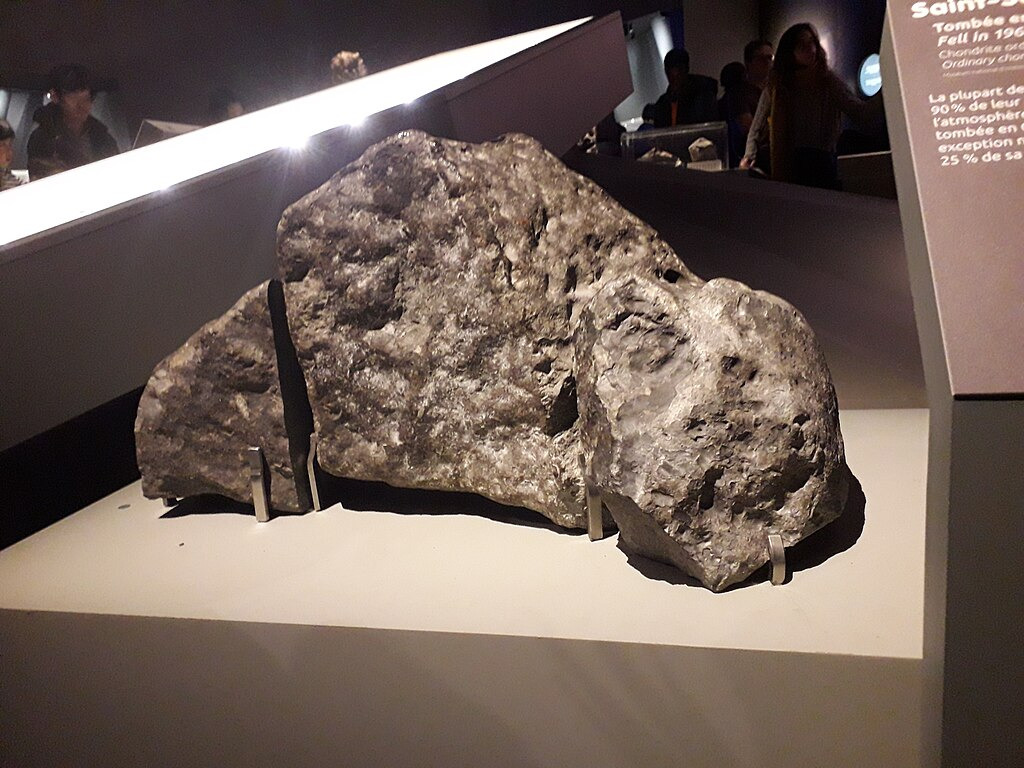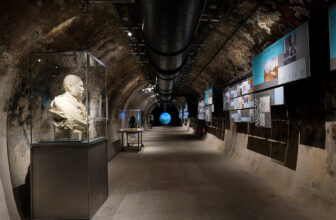
Where is the meteorite in the Natural History Museum?
The National Museum of Natural History (Muséum National d’Histoire Naturelle, MNHN) in Paris houses one of the world’s most significant meteorite collections, renowned for its historical importance and scientific value. This collection encompasses approximately 3,385 specimens representing 1,343 distinct meteorites, including fragments originating from the asteroid belt located between Mars and Jupiter.
Notably, the museum has recently acquired fragments from a meteorite that fell in Normandy in February 2023. These fragments are currently on display in the Galerie de Minéralogie et de Géologie.
To visit the meteorite collection, head to the Galerie de Minéralogie et de Géologie, located within the Jardin des Plantes on the left bank of the River Seine. The gallery is part of the main museum complex.
Historical Significance of the Collection
The MNHN’s meteorite collection has been shaped by contributions from prominent French scientists such as René Just Haüy, Auguste Daubrée, Stanislas Meunier, and Alfred Lacroix. Their work laid the foundation for the museum’s extensive assemblage. Notably, the fall of the L’Aigle meteorite in 1803, investigated by Jean-Baptiste Biot, was pivotal in recognizing the extraterrestrial origin of meteorites, thereby advancing the field of meteoritics.
Meteorites from the Asteroid Belt
The majority of meteorites in the MNHN collection are fragments from asteroids within the asteroid belt between Mars and Jupiter. These meteorites are primarily categorized into three types:
- Chondrites: These are stony meteorites containing chondrules—spherical silicate grains formed in the early solar system. They are among the most primitive materials, offering insights into the solar system’s formation.
- Achondrites: These stony meteorites lack chondrules and have undergone differentiation processes, providing information about the geological activity on their parent bodies.
- Iron Meteorites: Composed mainly of metallic iron-nickel alloys, these meteorites originate from the cores of differentiated asteroids, revealing details about planetary core formation.
Notable Specimens in the Collection
- Ensisheim Meteorite: Fell in 1492 in Alsace, this is one of the oldest documented meteorite falls. The MNHN preserves a significant fragment of this LL6 brecciated chondrite, showcasing its historical and scientific importance.
- Orgueil Meteorite: A carbonaceous chondrite that fell in 1864, it contains organic compounds and presolar grains, making it crucial for studies on the early solar system and the origins of life.
- Chassigny Meteorite: Fell in 1815, this meteorite is significant as the first recognized Martian meteorite, providing unique insights into the geology of Mars.
Exhibition and Research
The MNHN actively engages in the curation and study of its meteorite collection. The specimens are not only displayed for public education but also serve as valuable resources for scientific research. Researchers worldwide access the collection to study the composition, structure, and history of meteorites, contributing to our understanding of planetary formation and the early solar system.
The National Museum of Natural History in Paris offers a comprehensive and invaluable collection of meteorites, particularly those originating from the asteroid belt between Mars and Jupiter. Through its preservation and study of these extraterrestrial fragments, the museum provides profound insights into the history and composition of our solar system, bridging the gap between scientific discovery and public education.





